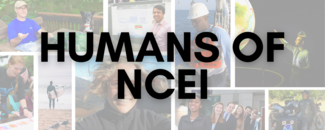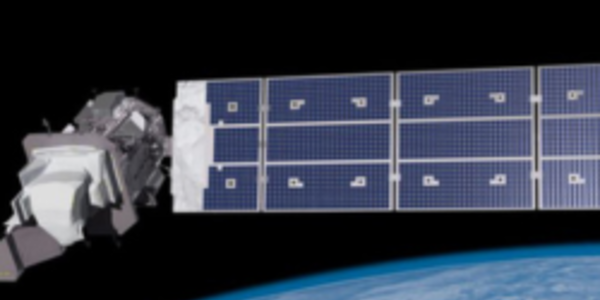
Here at NCEI, we aren’t just data—we are people. In our Humans of NCEI series, meet the awesome minds that manage one of the largest archives of atmospheric, coastal, geophysical, and oceanic research in the world. Get to know Juan Rodriguez, a Senior Space Scientist with the Cooperative Institute for Research in Environmental Sciences (CIRES) who is an expert in observations of charged particle populations in Earth's magnetosphere and solar wind.
What is your job title?
I am a Senior Space Scientist in the Solar-Terrestrial Physics (STP) group within the Oceanographic and Geophysical Science and Services Division.
What is your specific area of expertise?
My area of expertise is observations of charged particle populations in Earth's magnetosphere and solar wind. I work with particle data from NOAA's instruments on the POES, Metop, and GOES satellites. I am currently working on preparations for the processing of the data from the SWFO-L1 observatory, which is to be launched in 2025.
What was your first job? How did it prepare you for your current position?
After a few summer jobs in the electronics industry, the first job that really clicked was one in which, as an undergraduate, I laid out and populated printed circuit boards for very-low-frequency (VLF) radio receivers. These receivers were deployed at remote locations for monitoring variable plasma conditions in the lower ionosphere due to radiation belt and auroral particle precipitation and plasma heating by lightning and powerful radio transmitters. I used data from such receivers for my Ph.D. dissertation. I learned the importance of developing reliable hardware and characterizing its performance so that the data would be useful to scientists and engineers. That's been a key theme of my career, and it is central to my current position.
How did you end up at NCEI?
When I joined the GOES-R space weather group in 2009, it was in the Space Weather Prediction Center (SWPC), which was with the National Weather Service. After a couple of years, it was decided that the GOES-R space weather group would transfer to the National Environmental Satellite, Data, and Information Service (NESDIS), and Bill Denig (STP chief) welcomed us to our new home in the National Geophysical Data Center (NGDC), which is now NCEI.
What does a usual workday look like for you?
On any given day, I am developing and testing new algorithms and analysis methods for NOAA's space radiation particle data, planning or executing post-launch product tests, making presentations to our customers or the scientific community, or answering user inquiries about our data holdings. I also watch for space weather alerts from SWPC that indicate something interesting is happening on the Sun, in the solar wind, or in Earth's magnetosphere—hoping that it will allow us to better validate our products.
What question are you asked most often when someone finds out what you do? How do you respond?
When someone asks me what I do, I usually start by saying that I work on weather satellites, which one way or another I have been doing since my post-doc. If that strikes a chord, I go on to explain that my group works on NOAA's space weather observations from its weather satellites.
What sort of training and education would one need for your job?
It's important to learn the fundamentals: physics (especially particle physics and electromagnetics), calculus, statistics, probability. Scientific programming skills are essential. Because of the practical importance of our measurements, it helps to have experience with satellite hardware and to understand what space environmental information is needed by satellite engineers and operators (which is not necessarily what scientists think they need).
What inspired you to pursue a career in your field?
One day in my sophomore circuits class, Professor Bob Helliwell played a recording of a VLF “whistler”, a natural radio wave launched by a lightning discharge and dispersed in frequency as it propagated along a magnetic field line through the Earth's plasmasphere. That sold me on the study of Earth's magnetosphere and ionosphere. Later I would learn that whistlers interact with radiation belt particles, which NOAA measures on GOES and POES.
What projects are you working on now? Are there any upcoming projects that you are excited about?
My main projects are SWFO-L1, GOES-R, and the Metop A end-of-life tests. SWFO-L1 is scheduled to launch in 2025. I am an instrument scientist for the Supra Thermal Ion Sensor (STIS), which will support SWPC forecasts of solar radiation storms. It is exciting to learn about an instrument under development, to help develop the algorithms that will process its data for use by SWPC and the scientific community, and to plan the post-launch validation program.
What is your favorite aspect of your job?
Analyzing new data for the first time, analyzing historical data in new ways, and improving the quality and usability of NOAA's particle data.
What challenges have you had to deal with in your career?
A career tied to satellite programs will have its share of losses, delays, and even cancellations.
Who are you outside of your career?
I've been married for 28 years to my wife, Paige. We have three sons, the youngest of whom is a senior in high school. We also have a twelve-year-old blue heeler mix called Dusty, who has listened to all my meetings for the last two years and would like me to continue working from home since she gets more walks that way. I enjoy listening to classical music and opera. One of my favorite travel activities is to visit petroglyph sites, in the sandstone canyons of the Colorado Plateau, on lava fields in Hawaii...anywhere.
Last country visited?
I visited Belgium in November 2018 for the European Space Weather Week and traveled to the UK Met Office after that with NCEI and SWPC scientists. A memorable moment was on November 11 when we were waiting in the Brussels train station for the train to London. At 11:00 a.m., there was an announcement to stand for a minute of silence in commemoration of the 100th anniversary of the armistice that ended the fighting on the Western Front in World War I. Our train would subsequently zip us through the region of the Western Front, through the Chunnel, and on to London in a couple of hours. That felt like progress, although a fragile achievement that cannot be taken for granted.




